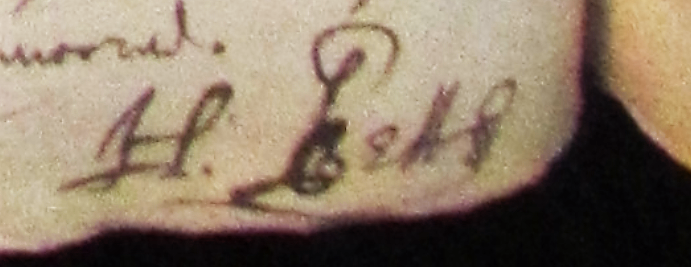Henry Betts
| Henry Betts | |
|---|---|
| Person | Henry Betts |
| Title | |
| First name | Henry |
| Middle name(s) | |
| Last name | Betts |
| Suffix | |
| Spouse of | Test Person |
| Widow of | |
| Occupation | Sailor |
| Secondary shorebased occupation | |
| Mariner occupation | Foremastman |
| Associated with ship(s) | |
| Training | Not apprentice |
| Is apprentice of | |
| Was apprentice of | |
| Had apprentice(s) | |
| Citizen | Not citizen |
| Literacy | Signature |
| Has opening text | |
| Has signoff text | H. Betts |
| Signoff image | |
| Language skills | English language |
| Has interpreter | |
| Birth street | |
| Birth parish | |
| Birth town | |
| Birth county | |
| Birth province | |
| Birth country | |
| Res street | Three Crane Lane, Thamesstreete |
| Res parish | |
| Res town | London |
| Res county | |
| Res province | |
| Res country | England |
| Birth year | 1637 |
| Marriage year | |
| Death year | |
| Probate date | |
| First deposition age | |
| Primary sources | |
| Act book start page(s) | |
| Personal answer start page(s) | |
| Allegation start page(s) | |
| Interrogatories page(s) | |
| Deposition start page(s) | HCA 13/72 f.30r Annotate |
| Chancery start page(s) | |
| Letter start page(s) | |
| Miscellaneous start page(s) | |
| Act book date(s) | |
| Personal answer date(s) | |
| Allegation date(s) | |
| Interrogatories date(s) | |
| Deposition date(s) | May 14 1657 |
| How complete is this biography? | |
| Has infobox completed | Yes |
| Has synthesis completed | No |
| Has HCA evidence completed | Yes |
| Has source comment completed | No |
| Ship classification | |
| Type of ship | |
| Silver Ship litigation in 1650s | |
| Role in Silver Ship litigation | |
Biographical synthesis
The young sailor Henry Betts was a foremastman on the ship the White Lilly (alt. White Lillie; Lys-blanc; White fflower da lune).
He is probably related to Patrick Betts, one of the owners and proprietors of the ship. Patrick Betts appears to be of Irish origin, and led a colourful life in the 1650s, working for London and Amsterdam based merchants (English, Dutch and Spanish), who were trading illegally in the Spanish West Indies.
REQUIRES MORE MATERIAL
Evidence from High Court of Admiralty
Henry Betts, a twenty year old sailor of Three Crane lane in Thamesstreete, deposed on May 14 1657 in the High Court of Admiralty. He was examined upon a libel in the case of "Betts and others against the Prince.[1] The "Betts and others" in the title of the case were Patrick Betts and Anthony ffernandez, who, together with their company, were the owners and proprietors of the ship the White Lilly. Later in his deposition, Henry Betts describes himself as a "foremast man" of the Lilly.[2] He does not state whether he is related to Patrick Betts, though this is clearly possible, indeed likely.
Henry Betts testifies that the White Lilly had been moored near Horsey Downe in April 1657 " in a safe and convenient place, where shipps doe usually and ordinarily ride." Betts then claimed that after two days and nights another ship, the Prince, had arrived and anchored so close to the White Lilly that she was foul of the Lilly's moorings and grounded upon the Lilly's cables.[3] On the flood tide the Prince had then driven against the Lilly and forced her from her moorings, so that she was drawn "athwart the chaine that was neere her". The Lilly's company were forced to cut their cable to free themeselves. Patrick Betts remonstrated with the master and company of the Prince, who remained negligent, and allowed their ship to come foul of the Lilly a second time.[4]
A separate case from February 1656, more than a year before Henry Betts' deposition, appears to be about the same ship. Several witnesses of Spanish origin testified "On the behalfe of Mr ffernandez touching the White fflower de lunn,[5] One of the witnesses, Senor Antonio ffernandez Caravajall, testified that he, Caravajall, had instructed a correspondent in Amsterdam, Mr Joseph Perera, to buy a Dutch ship for Caravajall's account, but in Perera's name. The reason for this subterfuge was that Carvajall intended to send the ship to Spain, with whom England was at war. Carvajall states that Perera bought a ship named the Lys-blanc, or in English the White-flower da lune. The ship had a burthen of about one hundred tons and cost about £250, which was paid by Perera drawing bills of exchange on Carvajall.
